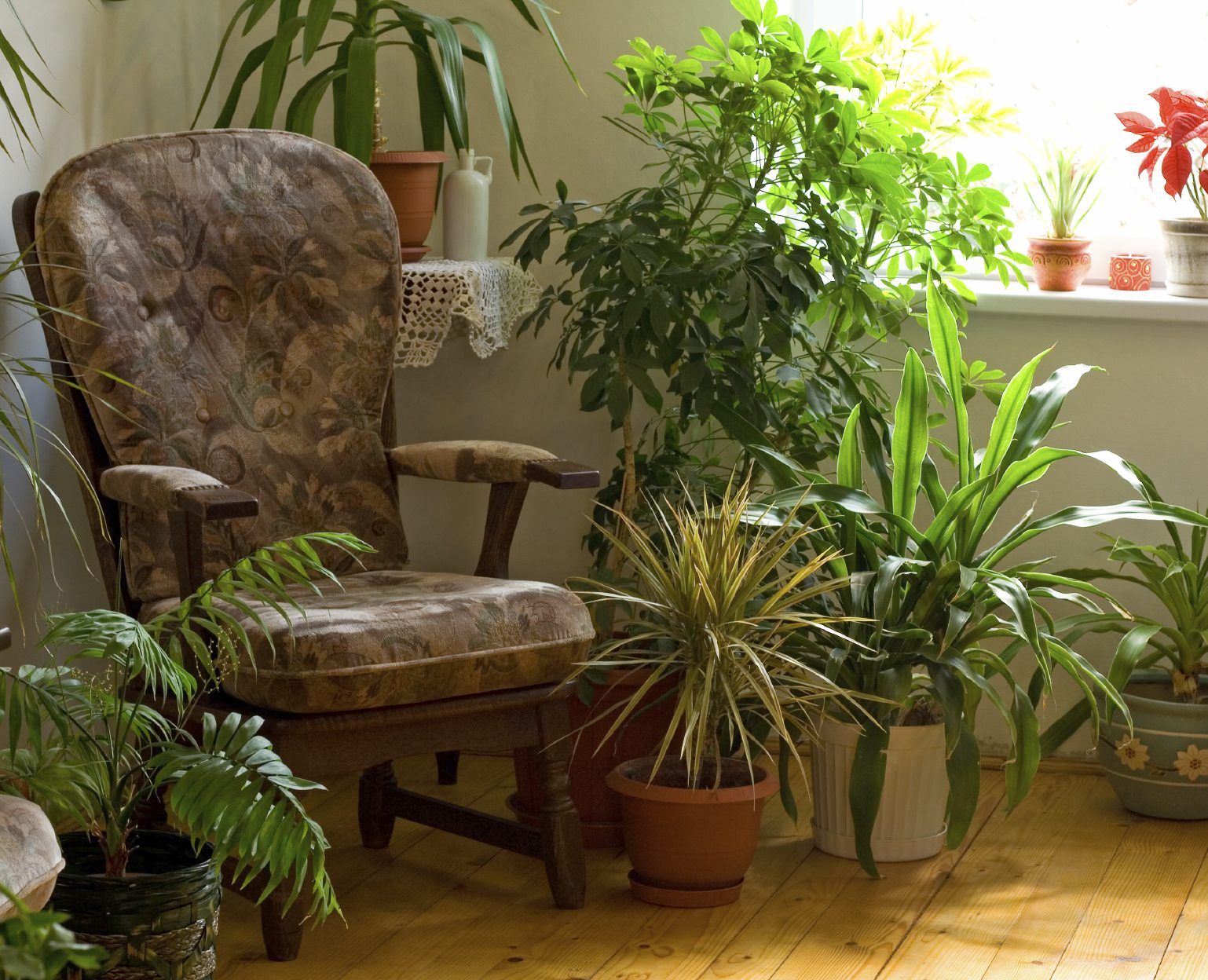Healthy Houseplants: How To Avoid Health Problems For Houseplants


Just like any other plant, indoor plants are subject to many pests and diseases, as well as physiological and cultural disorders. All of these houseplant issues cause a damaging or displeasing effect. Usually they can slow down or stop the plant's growth, stop flowering, or even physically damage or distort parts of the plant. So how do you keep houseplants looking healthy when faced with these obstacles? Simple. With adequate care of houseplants and a little know how into common houseplant issues, you'll be better able to grow healthy houseplants.
Common Houseplant Issues
Pests are mainly insects that cause damage. There are a number of pests that can affect houseplants. Some of these may include:
Diseases in houseplants are as varied as they are with humans. In order to treat these afflictions properly, you must know which organism causes them:
- Fungal
- Bacterial
- Viral
There are also physiological disorders that can affect houseplants, of which range a myriad of problems. These are not diseases, and they are not caused by pests. Rather, they are just things that can happen to put a damper on your plants' health. There are also cultural disorders. These are the problems you cause your own plants. For instance, if you overwater, underwater, keep the air too cold, put the plant in a draft, leave it in the sun-- all of these things will produce symptoms that do not favor healthy houseplants.
How to Keep Houseplants Looking Healthy
Health problems for houseplants can become worse without proper care. These plants are kept in artificial conditions. A lot of indoor plants come from tropical countries. The natural pest controls that are out there in the tropical forests might not be available indoors. The growth that is produced in warm, indoor conditions with less than perfect light is often soft. This is an ideal target for fungus. Indoors, pest outbreaks increase quickly because of warm, sheltered conditions. These conditions provide the perfect environment for pests to thrive. Check your plants regularly so that at the first signs of trouble, you can take action to correct these houseplant issues. The care of houseplants is vital. Taking the following steps will help ensure healthy houseplants:
- First, you will want to keep your plants growing strongly by making sure the conditions you keep them in are as close to their normal habitat as possible. They can still be attacked by pests, but they will be healthier and more able to withstand an attack in the right indoor environment.
- Try to keep the air recycled. Make sure there is adequate ventilation but without drafts. Humid air, especially if it's cool, will cause fungal diseases to erupt.
- Remember not to overfeed your plants. Too much nitrogen causes the plant growth to be soft and sappy. This makes them more vulnerable to both pests and diseases.
- Any new plants you get should be isolated until you know if they are free from pests and diseases.
- Be sure to check your houseplants regularly, making sure you look under the leaves where the majority of health problems for houseplants often start.
Gardening tips, videos, info and more delivered right to your inbox!
Sign up for the Gardening Know How newsletter today and receive a free copy of our e-book "How to Grow Delicious Tomatoes".

Heather Rhoades founded Gardening Know How in 2007. She holds degrees from Cleveland State University and Northern Kentucky University. She is an avid gardener with a passion for community, and is a recipient of the Master Gardeners of Ohio Lifetime Achievement Award.
-
 Get Ready For A Summer Of Hummers! Grow These Full Sun Hummingbird Plants and Flowers
Get Ready For A Summer Of Hummers! Grow These Full Sun Hummingbird Plants and FlowersIf you’re lucky enough to enjoy a sunny backyard, make sure you are maxing out on your pollinator opportunities and grow these full sun hummingbird plants and flowers
By Tonya Barnett
-
 12 Lush Alternatives To A Lawn For Sustainable Spaces
12 Lush Alternatives To A Lawn For Sustainable SpacesAlternatives to a lawn are beautiful and also beneficial to your local ecosystem and its pollinators. Explore our top picks for plants to replace grass.
By Tonya Barnett
-
 8 Easy Care Houseplants That Live A Long Time
8 Easy Care Houseplants That Live A Long TimeClick here to learn about our 8 favorite low maintenance houseplants that can, with proper care, live a long time.
By Amy Grant
-
 How Often Should You Repot Plants?
How Often Should You Repot Plants?Escaping roots and shrinking leaves may mean your plant wants a new pot, but some like staying cramped and cozy.
By Mary Ellen Ellis
-
 Orange Flowering Houseplant Varieties With Tropical Flair
Orange Flowering Houseplant Varieties With Tropical FlairClick here to learn about some cheerful orange-blooming houseplants you can try growing.
By Mary Ellen Ellis
-
 Variegated Houseplants With Lovely Leaves
Variegated Houseplants With Lovely LeavesWhat are some of the best variegated houseplants to add to your collection? Click here to find out.
By Amy Grant
-
 Lovely, Lacy Indoor Foliage Plants
Lovely, Lacy Indoor Foliage PlantsClick here to learn about some houseplants with lacy foliage to add to your collection.
By Mary Ellen Ellis
-
 Best Christmas Houseplants And Plants For Winter Holidays
Best Christmas Houseplants And Plants For Winter HolidaysClick here for an idea of the best houseplants to use for holiday décor for Christmas, Hanukkah, Kwanzaa, and New Year’s.
By Laura Miller
-
 Best Big Houseplants To Create An Indoor Oasis
Best Big Houseplants To Create An Indoor OasisIf you have the space you may want to grow some large houseplants. Here are some ideas.
By Mary Ellen Ellis
-
 Relaxing Plants To Grow Indoors For A Calmer Mind
Relaxing Plants To Grow Indoors For A Calmer MindAre there houseplants that can help you to relax? Click here to find out.
By Laura Miller